Dr. Barrett Mosbacker, PublisherI had the privilege of traveling to Australia and to China this summer. My trip to China was to develop relationships with school and government officials for establishing an academic and cultural connection between a Chinese high school and our new online Chinese class. The trip was also designed to lay the foundation for a possible student and/or faculty exchange program. The trip exceeded my expectations resulting in a partnership with a large Chinese high school and bringing a Chinese student to BCS to complete his last two years of high school.
I was also invited to Australia to speak to a Christian School Conference on the topic of “Building World Class Christian Schools.” This was timely because I have touched upon the subject from time-to-time in previous presentations and writings.
As I considered this topic, several questions came to mind:
- What is world-class? Is it a cliché?
- Should Christian schools strive to be world-class or are we merely accommodating the world?
- Is seeking to be world-class elitist and prideful or can it be honoring to the Lord?
- What would a world-class, Christ-honoring, Christian school look like?
These are important questions. On the one hand, we must always be vigilant not to mimic the world or adopt unbiblical values and perspectives. On the other hand, we are called as stewards to prepare our students to serve Christ in a global, technologically rich, interconnected world.
I believe we should and can build Christ-honoring world-class Christian schools but only if we carefully define what we mean by world-class. And I believe that this can be achieved by small and large Christian schools alike.
The dictionary defines world-class as “ranked among the best or most prominent in the world; of the highest order.” I offer for consideration a definition that significantly alters and expands the traditional definition of world-class making it far more biblical and practical.
A world-class Christian school is one that is used by Christ to change lives, its community, and its culture by virtue of its commitment to the preeminence of Christ as reflected in the development of the Christian mind and character of its students and in its establishment of superior standards in teaching and learning so that the school is a model of best practices throughout the world.[1]
A world-class, Christ-honoring, Christian 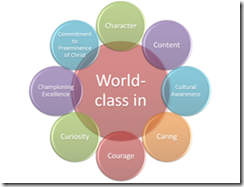 school requires a combination of traits and practices that are so unique, so “otherly worldly” that they are in a class by themselves—not by virtue of what we are against but by what we are for and by virtue of a quality that transcends the normal.
school requires a combination of traits and practices that are so unique, so “otherly worldly” that they are in a class by themselves—not by virtue of what we are against but by what we are for and by virtue of a quality that transcends the normal.
There are eight traits that we should cultivate in the pursuit of world-class quality. We should strive to be world-class in:
- Character
- The Content and Quality of our Instruction
- Being Culturally Relevant
- Our Caring
- Our Courage
- Fostering Curiosity
- Our Being Champions of Excellence, and
- Our Commitment to the Preeminence of Christ.
World-Class Character
Ideas have consequences. One of the best ways to promote Christian ideas—biblical truth—is to get students and others to ask questions. People ask questions when they are curious. People are curious when they are seeking closure—trying to connect dots.
People ask questions because they are curious or in an effort to bring harmony to emotional, spiritual, or what psychologists call cognitive dissonance. There is a tension and people seek answers and closure to relieve the tension.
Peter admonishes us to “always be prepared to make a defense to anyone who asks you for a reason for the hope that is in you.” But, we often take this verse out of context. Why was the question being asked in the first place?
It is because the Christians, who were suffering under Nero, were responding in a very peculiar way—instead of whining and feeling sorry for themselves, they were simultaneously grieving yet “rejoicing.”
(6) In this you rejoice, though now for a little while, if necessary, you have been grieved by various trials … (8) Though you have not seen him, you love him. Though you do not now see him, you believe in him and rejoice with joy that is inexpressible and filled with glory. (I Peter 1)
This was very unusual—they were not acting like everyone else—they were “otherly worldly”. They were able to rejoice even in the midst of dreadful circumstances—they could rejoice while crying. They, like Paul, could sing hymns while chained to Roman guards.
Those around them wanted to know “How can this be?” “How can these Christians respond this way when they are losing their jobs, their property, when they are being made fun of and slandered—even tortured and killed?
It was the uniqueness, the quality, the transcendent nature of the believers’ character and behavior—under great distress and duress—that prompted the questions and the openness to the Gospel. In other words, they were different and in being different—in being a peculiar people—they made a difference.
That is our call and our challenge. We will not change the lives of our students or the lives of our parents, let alone the community and world around us, unless we are fundamentally different—not legalists, not separatists, not kill joys—but different in our response to the issues of life—both the good and the bad.
The greatest lessons we ever teach are not spoken—they are lived. Ideas matter. Ideas have consequences but it is the character of our lives that open the door for a discussion of the ideas—of truth.
Go back for a moment in your mind’s eye. Jesus tells a small group of men standing on the hillside that they are the salt and light to the world. Most of these men were not great men of learning; they were not professors or teachers. In fact, it is quite possible that many of them did not do particularly well in school, which may explain why some of them are fishermen and tax collectors!
So how is it that they would be the Lights of the World? Obviously the direct application has to do with sharing the Gospel but there is actually a broader definition at work.
If you examine the full context of Jesus’ sermon, you realize that they were to be the light of the world—not merely because of what they would teach and preach-but because of what they would become by God’s grace. Consider the before and after context:
Before his statement about them being the Light of the World, he preached The Beatitudes (Mat 5:3-11):
(3) "Blessed are the poor in spirit, for theirs is the kingdom of heaven.
(4) "Blessed are those who mourn, for they shall be comforted.
(5) "Blessed are the meek, for they shall inherit the earth.
(6) "Blessed are those who hunger and thirst for righteousness, for they shall be satisfied.
(7) "Blessed are the merciful, for they shall receive mercy.
(8) "Blessed are the pure in heart, for they shall see God.
(9) "Blessed are the peacemakers, for they shall be called sons of God.
(10) "Blessed are those who are persecuted for righteousness' sake, for theirs is the kingdom of heaven.
(11) "Blessed are you when others revile you and persecute you and utter all kinds of evil against you falsely on my account.
After telling them that they were to be the light and salt of the world, he describes how (Mat 5:21-48):
(21) "You have heard that it was said to those of old, 'You shall not murder; and whoever murders will be liable to judgment.' (22) But I say to you that everyone who is angry with his brother will be liable to judgment …
(27) "You have heard that it was said, 'You shall not commit adultery.' (28) But I say to you that everyone who looks at a woman with lustful intent has already committed adultery with her in his heart.
(33) "Again you have heard that it was said to those of old, 'You shall not swear falsely, but shall perform to the Lord what you have sworn.' (34) But I say to you, Do not take an oath at all … (37) Let what you say be simply 'Yes' or 'No'; anything more than this comes from evil.
(38) "You have heard that it was said, 'An eye for an eye and a tooth for a tooth.' (39) But I say to you, Do not resist the one who is evil. But if anyone slaps you on the right cheek, turn to him the other also.
(43) "You have heard that it was said, 'You shall love your neighbor and hate your enemy.' (44) But I say to you, Love your enemies and pray for those who persecute you, (45)
And so on……
This demonstration of Godly character is counter-cultural, this is a much higher standard—this in a sense is world-class—in a class by itself—transcending cultural norms and cultural expectations.
We reflect this character in how we deal with personal challenges—physical, family, and financial. It is reflected in how we respond to an angry email or to the apathetic student.
It is our character that makes our message believable, that gives it credibility.
To be a Christian world-class school means that our character sets us apart from the pack; to be among best in world: ranked among the best or most prominent in the world, of the highest order—World-Class character.
World-Class Content, Curriculum, Instruction, and Standards
This leads to the second point, to be world-class means that we are to be fully committed to truth.
In one way—only Christian schools can be truly world-class because—if we are faithful to god’s word and to careful Christian scholarship—we are the only ones who teach the whole truth.
Don’t misunderstand—many unbelievers have, by common grace, much truth. And, many Christian are wrong about a great many things. But, Christians who are careful with God’s word and are careful students and teachers are able to be the light of the world because they have the whole truth—not mere fragments or distortions of it.
Psalm 19 declares:
(2) Day to day pours out speech, and night to night reveals knowledge. (3) There is no speech, or are there words, whose voice is not heard. (4) Their voice goes out through all the earth, and their words to the end of the world. In them he has set a tent for the sun … (Natural Revelation)
(7) The law of the LORD is perfect, reviving the soul; the testimony of the LORD is sure, making wise the simple; (8) the precepts of the LORD are right, rejoicing the heart; the commandment of the LORD is pure, enlightening the eyes; (Special Revelation)
Ultimately—the Word and the World are united in Christ in whom “we live and move and have our being.” To quote Dr. Poythress (Harvard Mathematician, Professor of NT, Westminster):
All scientists-including agnostics and atheists-believe in God. They have to in order to do their work … A Hindu philosopher may say that the world is an illusion. But he does not casually walk into the street in front of an oncoming bus. Sue, a radical relativist, may say that there is no truth. But she travels calmly at 30,000 feet on a plane whose safe flight depends on the unchangeable truths of aerodynamics and structural mechanics … scientists describe the regularities in God’s word governing the world.
So-called natural law is really the law of God or word of God, imperfectly and approximately described by human investigations … let us remember that we are speaking of real laws, not merely our human guesses and approximations. The real laws are in fact the word of God, specifying how the world of creatures is to function. So-called “law” is simply God speaking, God acting, God manifesting himself in time and space [Day-to-day pours forth speech]… what people call “scientific law’ is divine. We are speaking of God himself and his revelation of himself through his governance of the world … in thinking about law, scientists are thinking God’s thoughts after him.[2]
God has an opinion about everything…we are to seek to think about the world as God does. Let me give you an example. Francis Collins, —a world-class Christian scientist who takes both natural and spiritual revelation seriously—and whose Godly character has prompted many atheists to seek Christ because of his Christian response to his daughter’s rape, proclaimed in a speech to the world on the steps of the White House:
The human genome consists of all the DNA of our species, the hereditary code of life. This newly revealed text was 3 billion letters long, and written in a strange and cryptographic four-letter code. Such is the amazing complexity of the information carried within each cell of the human body, that a live reading of that code at a rate of one letter per second would take thirty-one years, even if reading continued day and night. Printing these letters out in regular font size on normal bond paper and binding them all together would result in a tower the height of the Washington Monument. For the first time on a warm summer day six months into the new millennium, this amazing script, carrying within it all of the instructions for building a human being, was available to the world …
Notice his words here:
… Without a doubt, this is the most important, most wondrous map ever produced by humankind…we are learning the language in which God created life. We are gaining ever more awe for the complexity, the beauty, and the wonder of God’s most divine and sacred gift …
… It’s a happy day for the world. It is humbling for me, and awe-inspiring, to realize that we have caught the first glimpse of our own instruction book, previously known only to God”[3]
Now that is being a light to the world. That is a reflection of the proper relationship of science and theology. That is a world-class Christian scientist! That reflects our spiritual and academic aspirations for our students!
World Class-Cultural Awareness and Relevance
David, after he had served the purpose of God in his own generation, fell asleep and was laid with his fathers. (Acts 13:36b)
Of Issachar, men who had understanding of the times, to know what Israel ought to do. (1Chron. 12:32a)
These passages make a point of emphasizing that godly leaders, those that God uses to shape their institutions, schools, communities and countries, understand their times—they are relevant and contemporary and they knew how to lead and to apply biblical principles to the contemporary context.
A world-class Christian school is relevant—its teachers and administrators are current, aware, globally informed and may I even suggest, “Withit”?
To borrow a phrase from someone else, we cannot have Flintstone schools in a Jetson world.
We are entering the second decade of the 21st century. We must understand our times and cultures if we are to effectively prepare our students to serve Christ.
In many ways, it is the tale of two cities—the best of times and the worst of times—at once an unprecedented time of progress and an unprecedented time of distress.
Progress
- The WSJ recently heralded a potential new era in biology, scientists for the first time have created a synthetic cell, completely controlled by man-made genetic instructions.
- We are in the midst of a third industrial revolution: Microelectronics, Computers, Robotics, Human Genome, Biotechnology, New materials, and Telecommunications.
- The top 10 in-demand jobs in 2010 did not exist in 2004.
- More than 3000 books are published every day.
- In 2008, the amount of new technical information was doubling every two years. This year, 2010, it is projected to double every 72 hours!
- Immediate access to vast amounts of information and communication: we carry a world of knowledge in our pockets!
- There has been some progress in some cultures dealing with racial, political, and socio-economic discrimination.
- The human race is more productive than at any time in human history.
- More people have access to better health care than at any time in history.
- Generally speaking, we are far more sensitive to environmental concerns than in past generations.
- The educational opportunities available in the world are advancing rapidly enable giving more people greater access to education and a better future.
Distress
- We live in a very violent time. More people were killed by war and their governments in the 20th century than in all human history combined. Local, regional, and international wars continue to increase.
- Fanaticism of all sorts too often results in the killing of innocent men and women.
- Many of the world’s economies are sinking under unsustainable debt.
- It is increasingly difficult for the undereducated to find permanent employment to care for themselves and their families.
- The deviate and perverted are celebrated as good while the natural and holy are condemned as evil.
Woe to those who call evil good and good evil, who put darkness for light and light for darkness, who put bitter for sweet and sweet for bitter! (Isa 5:20)
- Materialism and sensuality are rampant.
- Relativism and post-modernism are the reigning worldviews of our time.
These are our times-this is the world that our students are entering and in which they must provide leadership. It is a world of unprecedented opportunities and challenges!
We cannot do business as usual. We must engage with how things are, not how they were or how we wish them to be.
There is great value in tradition; there is great value in our heritage as Christians, and as Americans. But the value is not in the traditions themselves-it is in the principles and lessons learned that can be applied in new and creative ways to our contemporary context so that like the men of Issachar, men who had “understanding of the times to know what Israel ought to do,” we understand our times and know what do to—how to teach and how to lead.
I want to emphasize that while our methods may and often must change, e.g., through the application of neuroscience, technology, creative assessment techniques, and so forth, our commitment to God’s word is immutable.
World-Class Caring
We cannot and will not meet the challenges of the 21st century and of our students unless we care. We cannot be a city on the hill; we cannot be the light of the world, unless we love our neighbors as ourselves, unless we sacrifice ourselves for our students and our parents, even or especially the ones that we find it hard to like.
One of the primary ways we let our light shine is through our good works, a reflection of our love and concern for others: “let your light shine before others, so that they may see your good works and give glory to your Father.”
- Have this mind among yourselves, which is yours in Christ Jesus, who, though he was in the form of God, did not count equality with God a thing to be grasped, but made himself nothing, taking the form of a servant, being born in the likeness of men. And being found in human form, he humbled himself by becoming obedient to the point of death, even death on a cross. (Php 2:5-8)
- You call me Teacher and Lord, and you are right, for so I am. If I then, your Lord and Teacher, have washed your feet, you also ought to wash one another's feet. For I have given you an example, that you also should do just as I have done to you. Truly, truly, I say to you, a servant is not greater than his master, nor is a messenger greater than the one who sent him. If you know these things, blessed are you if you do them. (Joh 13:13-17)
- A new commandment I give to you, that you love one another: just as I have loved you, you also are to love one another. By this all people will know that you are my disciples, if you have love for one another." (Joh 13:34-35)
In other words, people are more important than tasks. Administrators lead people not employees, teachers teach students, not subjects!
To be world-class Christian schools means that we love and serve our students, we do not merely teach them. Sometimes this requires tough love but it always requires love. Paul makes the point as powerfully as it can be made: “If I speak in the tongues of men and of angels, but have not love, I am a noisy gong or a clanging cymbal.” (I Cor. 13:1)
To be world-class our love, our devotion, and our sacrifice for and service to our students must be ranked among best in world: ranked among the best or most prominent in the world—of the highest order.
There should never be an instance when an unbelieving teacher, administrator, or coach is more caring, more loving, and more sacrificial in the care and teaching of his or her students than a believer!
World-Class in Courage
To be world-class takes courage.
- It takes courage to speak the truth.
- It takes courage to insist and to model excellence—it takes courage to refuse the mass current of mediocrity—to swim against the current.
- It takes courage to give an honest, rather than a safe grade.
- It takes courage to tell a parent that his/her son is not doing well, is not working hard.
- It takes courage to tell a teacher that he/she is coasting.
- It takes courage to tell an administrator that he or she is not providing visionary, strategic, effective leadership.
- It takes courage to try new things, to experiment, to get beyond our comfort zones and our routines.
- It takes courage to go beyond tradition and beyond what we have always done.
Without the courage to speak the truth in love, without the courage to experiment, without the courage to break out of the ordinary and to help our students do likewise, we cannot be world-class.
World-Class in Curiosity
We cannot shine if we are dull. We cannot be lights to our students if we have stopped learning. We cannot ignite a heart and mind of curiosity if we have lost ours—the student will be like his teacher—we cannot give what we do not possess.
Are we reading outside our professional field? Are we learning about new discoveries? Do we read those with whom we disagree? Are we learning new skills? Is there any venturesomeness about us? Or have we become stale, provincial, sheltered, and comfortable? Are we routine?
Curiosity is the very essence of Christian education because it is embedded in us as image bearers, it is the catalyst for the cultural mandate—to exercise dominion and stewardship over creation—and is it what propels us to investigate and to learn, to develop new tools and new methods.
Paul Marshall, in his wonderful book titled: Heaven in Not My Home[4], writes:
Many of those who denounce technology have no real desire to live in some primitive civilization. Instead, many of them sit amidst the fruits of technical progress all the while denouncing the technology that brought them. Technology, properly used, is a gift from God.
The topic of technique and technology preoccupies today’s world. Technique refers to “how to” do something—it is the science of “how.” It encompasses all that we can do—from going to the moon to public speaking, from designing nuclear bombs to making love, from serving a hungry neighbor to writing books. All of these are included when we talk about technique.
Along with technique comes technology, which is the made, created, embodied structure of technique. Technology includes, in one form or another, all those things that do not naturally occur, all those things that we shape and reshape. Technology infuses art as much as physics, families as much as engineering. To talk about technique and technology is to talk in one particular way about all of human life, as all of human life has some technical aspect. Responsible technical skill is both a gift and a calling. It is the human task of reshaping the materials of God’s world in new ways. It is imagination and skill in the service of usefulness.
Nor is our task in the world simply following the clear rules that God has set down, though we must certainly follow God’s commandments and learn from the creation itself. We have a creative task in the world. We must shape things in ways for which there is sometimes no clear direction. This is why imagination is not just a feature of the arts; it is a feature of human life itself. Without imagination, without experimentation, without openness to new questions and new possibilities, there can be no science and no technology. We are not challenging God when we do this, at least not when we do it in humility and faith. We are not stealing fire from the gods. We are taking up our responsibility before God to shape what he has placed in our hands.
Christian education is the exploration of God’s mind as revealed in creation! Christian education is preparing students to use their skills, their imaginations, and their curiosity to shape the world and to build God honoring culture. That is a wondrously beautiful and infinitely deep mission!
On a building at Harvard is the following inscription: “Students explore the mind of God for the art of life.” Let that sink in. “Students explore the mind of God for the art of life.” I often include this quote in my email signature line because I believe that if one takes time to mediate on it that it has profound implications for Christian education. The Psalmist writes:
Great are the works of the Lord; they are studied by all who delight in them. (Psalm 111:2)
- When our students look into a microscope, they are peering into the mind of God.
- When they gaze through a telescope, they are encountering the creation of an incomprehensible, infinite intelligence.
- When they listen to music, they are experiencing the beauty and harmony of God’s character.
- When they study mathematics, they are, to quote Edward Everett, a former president of Harvard:
Contemplating truths, which existed in the divine mind before the morning stars sang together, and which will continue to exist there, when the last of the radiant host shall have fallen from heaven.” Mathematics reflects the sustaining power of the Word of God.
- In the study of history they are investigating the sovereignty and providence of God as worked out in time and space:
And x[God] made from one man every nation of mankind to live yon all the face of the earth, zhaving determined allotted periods and athe boundaries of their dwelling place, 27 bthat they should seek God, in the hope that cthey might feel their way toward him and find him. dYet he is actually not far from each one of us, [5]
This is inexhaustible! Do we FEEL the wonder in what we teach and why we lead? Are we passionate about plunging into the depths of God’s infinite, beautiful mind as we explore this world and the universe?
Is that what you are experiencing? Is this what our students are experiencing in our classrooms? Do they leave our classrooms awestruck at who God is and what he has done? Do they leave Chemistry class a better person for having encountered Christ in chemistry?
Fostering curiosity like this will produce world-class teachers, students, and schools!
World-Class Champions of Excellence
We are to be champions in the quality of our own work and in our work-ethic. Champions, by definition, are world-class. I immediately think of Olympic champions or the World-Cup. These athletes are the best in the world.
As Christian school teachers and leaders, we should seek to be the best in the world, to have the best schools in the world—not for our glory but that men may see our “good works” and glorify our father in heaven.
This is not a matter of pride. Since we are to “do everything as unto Christ” and since Christ is the King of Kings and Lord of Lords, and since one day we must give an account for our work on this earth, how can we strive for anything less?
- How can we serve up a warmed over lesson plan? Would you serve Christ leftovers if he came over for dinner? Why then would we serve his children left-over lessons or left-over leadership? Jesus said “as you did it to one of the least of these dmy brothers,6 you did it to me.”
- How can school administrators provide mediocre leadership?
- How can we fail to walk that extra mile for a student or parent (even the ones we don’t particularly like) when Jesus tells us to willingly walk an extra-mile for a Roman soldier who has occupied your country, steals your wealth through unfair taxation, who may be the very soldier who will crucify Jesus, and who may serve Nero in torturing Christians to death? How can we do less for our students and parents? How can we do less for each other?
- How can we be satisfied to provide our students an education, that while ranking high in the U.S., may in fact be in the middle of the pack or lower when measured against international standards?
We are to be the beacon of light on the hill of excellence—drawing unbelievers to our schools to learn from us!
We are to be Champions in the quality of everything that we do: ranked among best in world: ranked among the best or most prominent in the world, of an international standard of excellence; of the highest order—not for our glory but the glory and honor of Christ.
World-Class Commitment to the Preeminence of Christ
This work is not about us. The work we do in our Christian schools is about the Kingdom of God—it is that simple and that profound. Jesus is The Alpha and the Omega of Creation and he is the Alpha and Omega of our work and our schools!
Being a world-class Christian school is a POSITIVE mission:
- It is not about withdrawal, not about protecting, and not about sheltering; our call is about providing a positive imaginative, engaging vision of personal and cultural redemption and transformation under the Lordship of Christ.
- It is not about what we are against as much as what we are for, what we are called to do as creative, relational, rational, redeemed image bearers.
Paul Marshall[6] makes the following observation and goes on to quote C.S. Lewis:
The major patterns of our culture and society are being shaped with almost no Christian presence. We live in a “subculture,” on our own island, increasingly far from shore.
And when we do seek influence, we often only react to someone else’s proposals. If the Disney Company puts out movies that trivialize or demonize the Christian faith, we boycott them. But this simply pulls us farther into our own shell. We have no alternative to put forward, no movies that undercut Disney because they’re better. A familiar proverb says, “The fool curses the darkness, but the wise man lights a candle.” We “curse” a lot but have few candles, and so the darkness deepens …
If Christian faith produces good families, good businesses, good art, good books, and good politics, then people will notice, and they will be intrigued. In American society, where people think they know all they want to know about Christianity, this is especially important. As usual, C. S. Lewis said it well:
I believe that any Christian who is qualified to write a good popular book on any science may do much more by that than by any directly apologetic (evangelistic) work…We can make people (often) attend to the Christian point of view for half an hour or so; but the moment they have gone away from our lecture or laid down our article, they are plunged back into a world where the opposite position is taken for granted…What we want is not more little books about Christianity, but more little books by Christians on other subjects—with their Christianity latent. You can see this most easily if you look at it the other way round. Our Faith is not very likely to be shaken by any book on Hinduism. But if whenever we read an elementary book on Geology, Botany, Politics, or Astronomy, we found that its implications were Hindu, that would shake us. It is not the books written in direct defense of Materialism that make the modern man a materialist; it is the materialistic assumptions in all the other books. In the same way, it is not books on Christianity that will really trouble him. But he would be troubled if, whenever he wanted a cheap popular introduction to some science, the best work on the market was always by a Christian.
- It is about being empowered by God’s Spirit that God’s will be done on earth as it is in heaven. It is about leading, serving, changing, and creating under the Lord of Jesus Christ-our King and our Savior!
- It is about being a city on the hill—a city of educational excellence that draws believer and unbeliever alike to our schools as models of character, caring, of contemporary instruction and learning, of curiosity as we explore the wonder of God’s world.
- It is about the exaltation of Christ as He is seen and known in the Scriptures and in creation.
Conclusion—A Vision for the Future—Where in The World Are We Going?
We live in one of the most challenges times in human history and a time of nearly unparalleled opportunity. On the one hand, the world faces great challenges and threats; we live in a time when one small miscalculation, e.g., on the Korean Peninsula or in dealing with Iran, can erupt into a regional or world war with devastating consequences.
On the other hand, we live in a time when we are able to access and to disseminate information with unprecedented speed and ease. We can carry whole libraries in our pockets. With leadership, vision and the right tools, we can make our lessons available to most people on this planet!
There has seldom been a time when the light of God’s word was more needed or a time when there have been more competing false lights in the world.
As Christian school teachers and leaders, we are called to be lights on the hill, beacons of truth.
- We must lead not follow, as individual Christian professionals and as a school!
- We must set the standard, not rest with mediocrity the easy the familiar, the comfortable. We are called to be world-class—to rise above the norm—by being world-class in our Character, the Content of our Curriculum and Quality of our Instruction, Caring, Courage, Curiosity, in being Champions of Excellence, in our Commitment to the Preeminence of Christ.
Right Now Counts Forever
“Then I saw a new heaven and a new earth, for the first heaven and the first earth had passed away, and the sea was no more. (2) And I saw the holy city, new Jerusalem, coming down out of heaven from God, prepared as a bride adorned for her husband. (3) And I heard a loud voice from the throne saying, "Behold, the dwelling place of God is with man. He will dwell with them, and they will be his people, and God himself will be with them as their God. (4) He will wipe away every tear from their eyes, and death shall be no more, neither shall there be mourning, nor crying, nor pain anymore, for the former things have passed away." (5) And he who was seated on the throne said, "Behold, I am making all things new." Also he said, "Write this down, for these words are trustworthy and true." (6) And he said to me, "It is done! I am the Alpha and the Omega, the beginning and the end. To the thirsty I will give from the spring of the water of life without payment. (7) The one who conquers will have this heritage, and I will be his God and he will be my son … (22) And I saw no temple in the city, for its temple is the Lord God the Almighty and the Lamb. (23) And the city has no need of sun or moon to shine on it, for the glory of God gives it light, and its lamp is the Lamb. (24) By its light will the nations walk, and the kings of the earth will bring their glory into it, (25) and its gates will never be shut by day--and there will be no night there. (26) They will bring into it the glory and the honor of the nations.” (Rev 21:1-7; 22-26)
That is our future—that is the future that we are preparing our students to inherent—a new heaven and a new earth in which men from every tribe, nation, and tongue build a new culture and a new civilization. The work begins now—with our students, in our classrooms, in our Christian schools! This is the end for which we work! This is world-class Christian education!
[1] © Copyrighted Barrett Mosbacker 2010
[2] Poythress, V. S. (2006). Redeeming science: A God-centered approach. Wheaton, IL: Crossway Books.
[3] Dr. Francis Collins, A scientist presents evidence for belief: The language of God, (Free Press, New York), 2006, pp. 2-3
[4] Marshall, P. (1998). Heaven is not my home: Learning to live in God's creation
x x [Gen. 3:20; Mal. 2:10]
y y Gen. 11:8; Luke 21:35
z z [Job 12:23; 14:5]
a a Deut. 32:8; [Ps. 74:17]
b b [ch. 15:17]
c c [Job 23:3, 8, 9]
d d [Deut. 4:7; Ps. 145:18; Jer. 23:23, 24]; See ch. 14:17
[5] The Holy Bible : English standard version. 2001 (Ac 17:25–27). Wheaton: Standard Bible Society.
d d ch. 28:10; John 20:17; Rom. 8:29; Heb. 2:11; [ch. 12:50]
6 6 Or brothers and sisters
[6] Marshall, P. (1998). Heaven is not my home: Learning to live in God's creation




 It is hard to find it hard to find time to focus, think, and work on important projects. We are constantly interrupted and distracted. The immediate crowds out the important.
It is hard to find it hard to find time to focus, think, and work on important projects. We are constantly interrupted and distracted. The immediate crowds out the important. 

 Dr. Barrett Mosbacker, Publisher
Dr. Barrett Mosbacker, Publisher 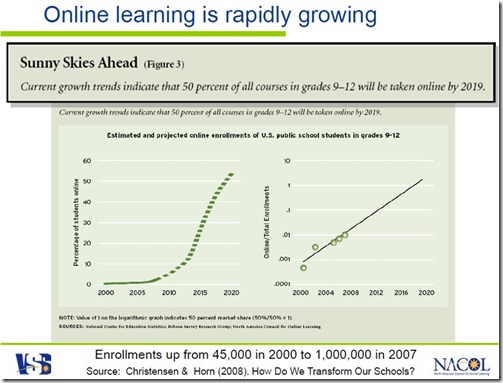
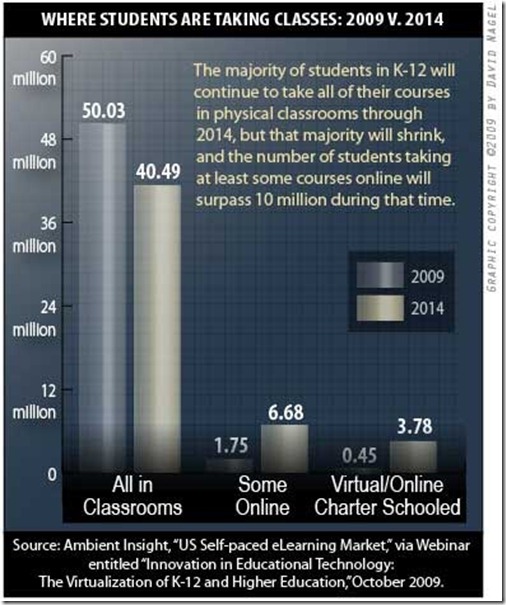
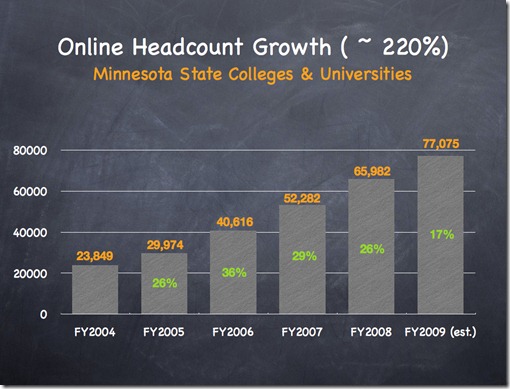

 This article, although related specifically to Apple and Amazon, the larger story is the fast movement to digital content for books/textbooks.
This article, although related specifically to Apple and Amazon, the larger story is the fast movement to digital content for books/textbooks. 


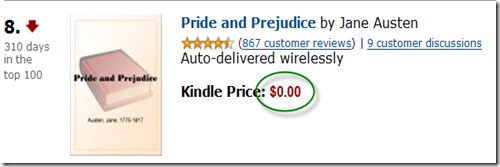

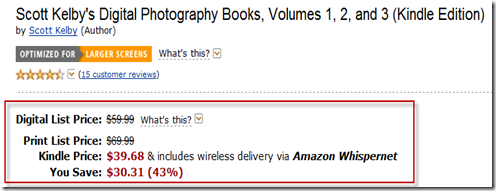
 Dr. Barrett Mosbacker, PublisherFacebook recently irked me. I am a Facebook user but I am not a heavy user. I keep up with a few colleagues and friends but mostly I post articles on Facebook that I believe others may find interesting. I mostly use Facebook so that I can work through the biblical, educational, and social implications of social technologies as a Christian. We are called to bring all of life under the Lordship of Christ—that includes Facebook and similar technologies.
Dr. Barrett Mosbacker, PublisherFacebook recently irked me. I am a Facebook user but I am not a heavy user. I keep up with a few colleagues and friends but mostly I post articles on Facebook that I believe others may find interesting. I mostly use Facebook so that I can work through the biblical, educational, and social implications of social technologies as a Christian. We are called to bring all of life under the Lordship of Christ—that includes Facebook and similar technologies. 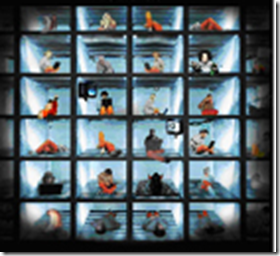 moments to the Web for all to see. It’s easy to say that privacy is dead, we all live in public now, and just deal with it.
moments to the Web for all to see. It’s easy to say that privacy is dead, we all live in public now, and just deal with it.